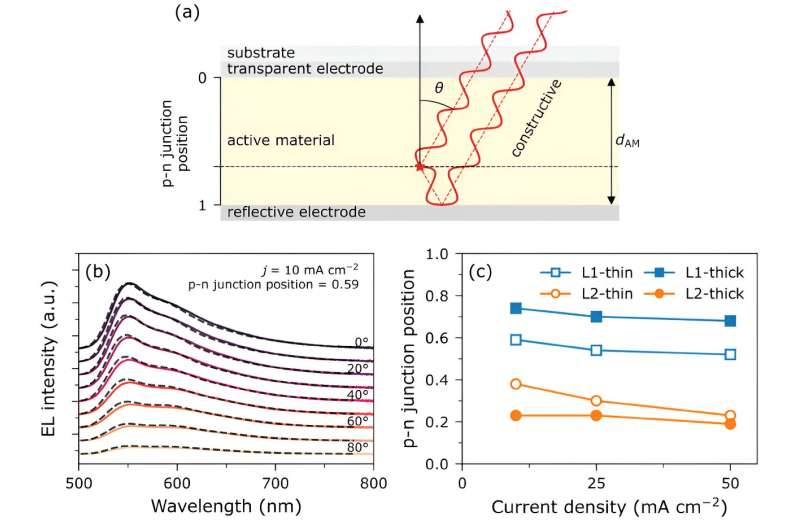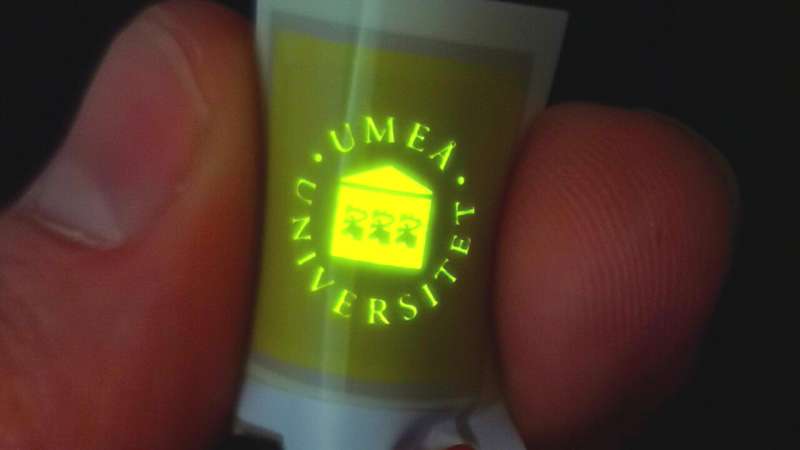This article has been reviewed according to Science X's editorial process and policies. Editors have highlighted the following attributes while ensuring the content's credibility:
fact-checked
peer-reviewed publication
trusted source
proofread
New understanding of energy losses in emerging light source

The light-emitting electrochemical cell (LEC) can be fabricated in a sustainable and cost-effective way on both rigid and flexible surfaces making it suitable for a broad range of applications, like illumination, health care, and signage. Despite its potential, this technology faces a significant challenge: a decrease in emission efficiency at higher electrical currents, a phenomenon known as "efficiency roll-off."
A research team at Umeå University has now developed a method to identify and quantify the primary factors contributing to the LEC efficiency.
"This insight will help us to reduce efficiency loss, allowing us to design and develop LEC devices that deliver bright emission at high efficiency," says Xiaoying Zhang, a doctoral student at the Department of Physics at Umeå University, and one of the authors of the study that was published in the journal Advanced Materials.
The breakthrough revolves around a detailed understanding and quantification of the internal so-called quenching processes, where collisions between particles in the device lead to energy loss in the form of decreased light production.
"Think of a box with two kinds of tiny balls bouncing around: one kind can glow, and the other kind can't. If a glowing ball bumps into another ball, it stops glowing, and the light is lost. We found that it is specifically the bumping between glowing and non-glowing balls that is the main reason why our devices lose efficiency," says Xiaoying Zhang.
"This loss mechanism is called 'exciton-polaron quenching' and we found that more than half of the light is lost in this way," Xiaoying continues. The findings of this study therefore imply that developing materials, device designs and operation protocols that reduce the impact of this loss mechanism is a feasible path towards brighter and more efficient LECs.

More information: Xiaoying Zhang et al, Efficiency Roll‐Off in Light‐Emitting Electrochemical Cells, Advanced Materials (2024). DOI: 10.1002/adma.202310156


















